King Pigeon : A Magnificent Utility Bird
The King pigeon is a fancy domestic bird primarily raised for utility purposes. Interestingly enough, this breed is one of the few developed in the United States using selective breeding practices.
Get ready to delve into the captivating world of King Pigeons! From their origins in selective breeding to their impressive physical features, behaviors, and global presence, this article covers everything.
Discover the rich history, unique characteristics, and practical tips for breeding and maintaining these majestic birds.
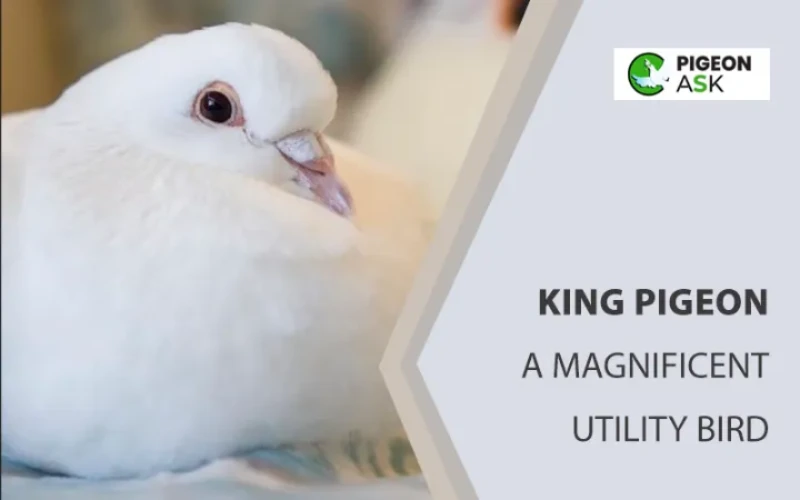
Whether you’re an enthusiast or seeking detailed insights, this comprehensive guide has something for everyone fascinated by the regal allure of King Pigeons.
King Pigeon Profile
| Name | King Pigeon |
|---|---|
| Scientific Name | Columba livia domestica |
| Common Names | 01. King pigeon 02. Show pigeon |
| Origin | United States |
| Size | Large |
| Weight | 1.5 to 2.5 pounds |
| Lifespan | 10 to 15 years |
| Physical Features | Large body, small eyes, medium-sized beak, white and other colors, strong feathers |
| Behavior | Docile, gentle, calm |
| Special Features | Large size, pure white color |
| Breeding and Maintenance | Easy |
| Common or Popular Varieties | Show King Pigeon Different colors and patterns |
Interested in similar topics on pigeon breed:
Overview of King Pigeons
The King pigeon is a domesticated bird, a descendant of the rock dove developed by selective breeding. Originally, the purpose of this breed was to produce eggs and live squabs.
It’s known for its size, initially developed for practical use like meat production and later showcased in pigeon exhibitions.
Originating in the United States, these pigeons stand out for their hefty build and suitability for yielding squabs (young pigeons) for consumption.
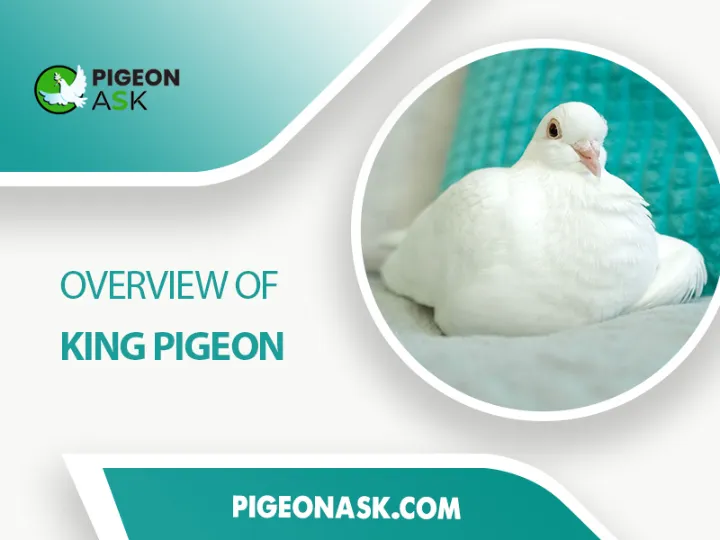
Descended from the rock dove, they boast remarkable speed, endurance, and navigational skills, making them top contenders in racing.
These pigeons surpass other domestic breeds in size, with males weighing up to 1.5 kg and females up to 1.2 kg. Beyond utility, they’re cherished for their friendly and laid-back demeanor, making them ideal companions.
Intelligent and possessing excellent homing abilities, King pigeons were historically employed as message carriers.
History And Origins of King Pigeons
The origin of the King pigeon traces back to 1890, when fanciers crossed different pigeon breeds to develop the King breed. They chose the following:
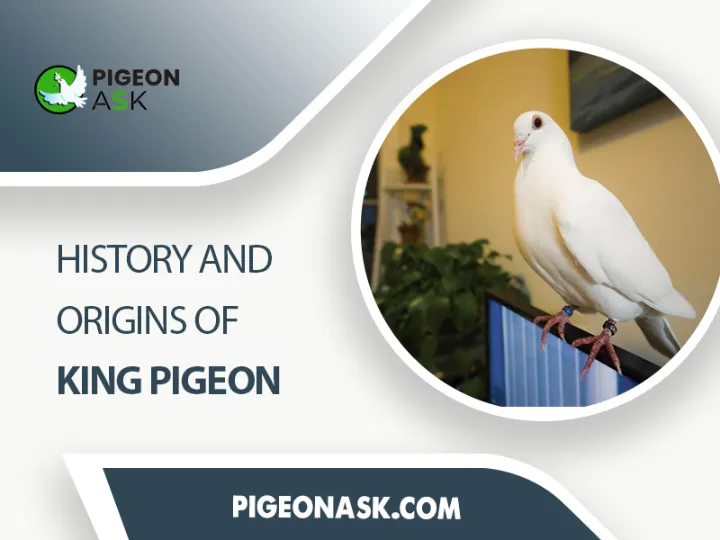
- Duchess pigeon, which would provide its graciousness.
- Homer pigeon, a bird selected because of its high sense of alert.
- Maltese pigeon, which added its fancy look and style.
- Runt pigeon because of its large size and imposing look.
Fanciers followed selective breeding practices to create this pigeon for utility purposes. However, the large body and considerable size of the King pigeon made it suitable for squab production as well.
Physical Characteristics And Features
The King pigeon is easily considered the most beautiful breed of domestic pigeons. Its large body and bright color make it a stunning bird, ideal for exhibition or pet.
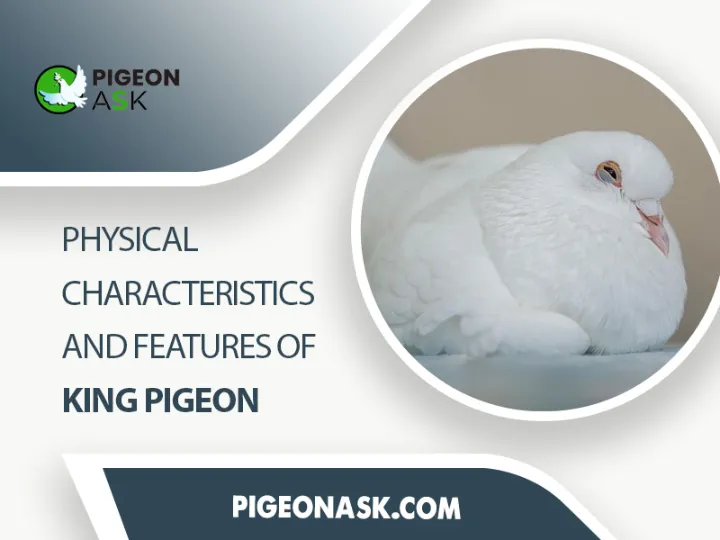
While this pigeon can be different colors, white-colored King pigeons are the most majestic and captivating.
| King Pigeon | Physical Features |
|---|---|
| Head | Oval-shaped head. |
| Eyes | Small, black eyes with high alert to surroundings. |
| Beak & Cere | Medium-sized beak, which can slightly vary in color like the cere. |
| Neck | Broad neck, but not too wide. |
| Body | Large body that shows a majestic standing stance. |
| Wings | Same color as the body. Long and strong feathers. |
| Feathers | Diverse patterns, like pied, mottled, or solid variations. |
| Tail | Strong-feathered tail that remains parallel to the wings. |
| Legs | Medium-sized legs of red color. |
Unique Features
Realistically, the most important features of the King pigeon and the reasons why fanciers breed this bird are its large size, weight and beautiful color.
These pigeons are large and can weigh between 1.5 and 2.5 pounds, producing considerable meat for squab harvesting.
Variations
A popular variation of the King pigeon is the Show King. In this case, Show King pigeons are suitable for exhibition and squab-raising purposes.
Color variation is another feature to consider. While the King pigeon can be black, red, blue and other colors, pure whites are the most attractive.
Distribution And Habitat
What’s the global distribution of King pigeons? Due to their popularity, these birds are popular in many countries.
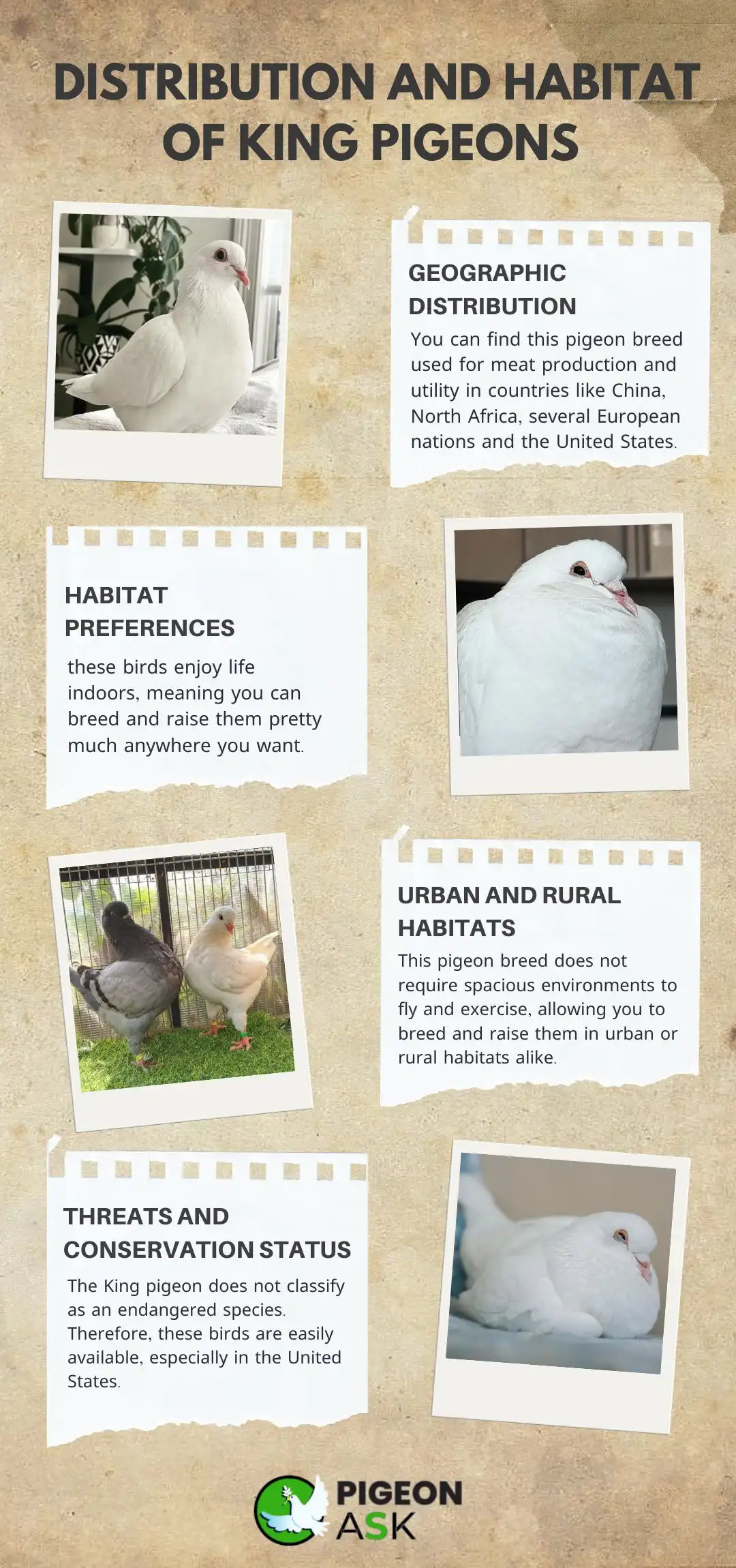
Geographic Distribution
King pigeons are popular birds worldwide. You can find this pigeon breed used for meat production and utility in countries like China, North Africa, several European nations and the United States.
Habitat Preferences
King pigeons do not have a preferred habitat. However, these birds enjoy life indoors, meaning you can breed and raise them pretty much anywhere you want.
Urban and Rural Habitats
This pigeon breed does not require spacious environments to fly and exercise, allowing you to breed and raise them in urban or rural habitats alike.
Threats and Conservation Status
The King pigeon does not classify as an endangered species. Therefore, these birds are easily available, especially in the United States.
Behavior And Traits of King Pigeons
The King pigeon breed is a beautiful bird you would want to keep as a pet due to its friendly nature.
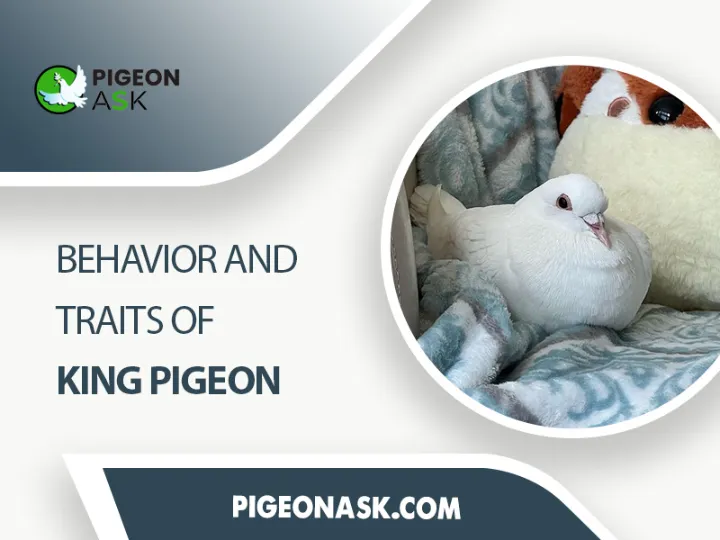
These birds are large and may be intimidating, but they’re docile, gentle and quiet. They’re also intelligent pigeons.
Differences Between Wild and Domesticated Pigeons
King pigeons are not birds you will usually find in the wilderness. The birds are better indoors because their large bodies, bright white color and lack of flying speed make the pigeon prone to predator attacks.
After years of domestication, these pigeons have grown to like living in aviaries.
Diet
The diet of the King pigeon does not represent any challenge whatsoever.
Feed these pigeons with pigeon feed, adding one cup for every four pigeons every day. Remember that these birds are foragers, meaning you can set the food over a baking sheet on the ground and they will eat it from there.
Pigeon feed provides everything the King pigeon needs for its diet. This product is available pretty much in any feed store and it includes a combination of peas, safflower, grains, corn and other ingredients.
Flight
King pigeons, while not strong fliers like homing pigeons due to their size, showcase good speed, stamina, and navigation skills, making them excellent racers.
Their intelligence and direction sense were historically put to use as messenger birds. King pigeons love life in aviaries and don’t fly too often.
Occasionally, they may fly to perches, but not too high. For this reason, it would be a good idea to build small perches around the aviary for the pigeons.
Other than that, these pigeons are large and heavy, complicating their flying ability.
Homing Instinct
King Pigeons do not have any significant homing instinct and they’re not suitable for outdoors. If you let them out, these birds wouldn’t probably know what to do or how to react.
Also, their physical characteristics are very noticeable from a distance, which could make it easy for predators to spot them.
Courtship, Nesting and Breeding
King pigeons can mate and lay eggs all year long, but the recommended time to breed them is from February to September.
This is because the weather conditions are more favorable, allowing the pigeons to mate and incubate the eggs comfortably.
Preferably, the mating pair must have a nesting box or specific area to feel safe. This area must be dry and should have access to ventilation. Likewise, straw and hay are necessary for the pigeons to accommodate their nest.
This pigeon breed is monogamous, meaning the pair will mate for life. During the breeding season, the male will court the female with physical displays like showing up their chest and cooing.
You don’t have to do anything during this period.
Afterward, the female and male will lay a couple of eggs and incubate them for 18 or 21 days.
Breeding And Maintenance
Raising King pigeons and taking good care of them is an easy task. First, the pigeons do most of the job themselves. They need a private area to mate and then they take care of the chicks.
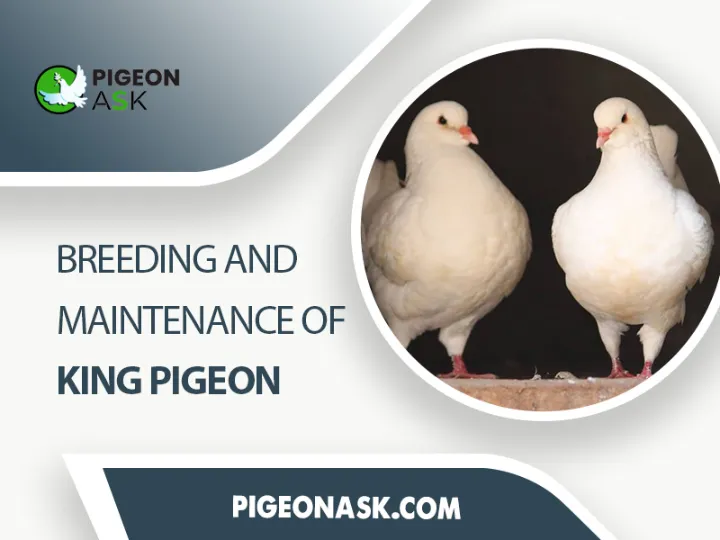
For maintenance, all you have to do is keep the aviary clean and provide a healthy diet, as we mentioned before.
Check out these tips to learn more.
Some Tips and Considerations for Successful Breeding
- The King pigeon is mature and ready to mate when they’re six months old. Nonetheless, you should wait until they grow up fully, which is around one year old.
- As mentioned before, these pigeons are monogamous. Identify the birds and their partners to make it easier for them.
- King pigeons follow a beautiful courtship ritual, showing their chests proudly and bowing their heads. This will help you identify which birds are compatible with each other.
- Create the conditions for breeding by introducing a mating pair with similar features, like similar height and color.
- Clean the breeding area regularly.
Housing and Feeding Requirements
King pigeons don’t often fly, but they still need a spacious living area. So, consider building an aviary as the ideal housing for these birds.
Make sure the place is 6 feet long, 6 feet high and 3 feet wide minimum to provide enough room for the pigeons to exercise and socialize.
Additionally, you can make the aviary more comfortable for the pigeons by adding perches and straw or hay to let them build a nest.
Feeding
Feed your King pigeons by providing a cup of pigeon feed per bird early in the morning. If you don’t know how to measure the perfect amount, you can figure it out by checking how much they ate.
Reduce the amount if there are leftovers or increase it if there’s nothing left.
Final Word
See why the King pigeon is one of our favorite birds? The gorgeousness of this pigeon is incredible, captivating people worldwide for centuries.
While the purpose of this pigeon breed has changed over the years, it’s still a beautiful pigeon that we all love because of its breathtaking white color and majestic body.
We love the King pigeon, but our passion for the bird world keeps taking us to new and exciting breeds constantly.
Stay connected with us on Facebook, Twitter and Google News to learn more about pigeons and other birds.
